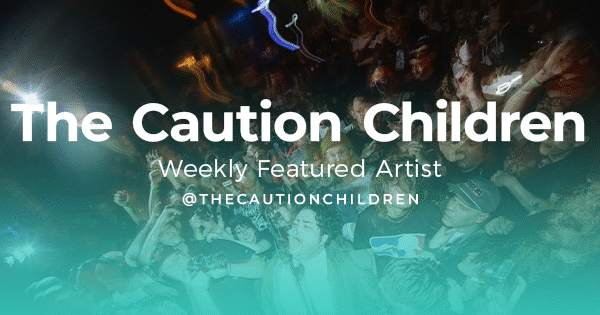What exactly does music mean to Jordsjø?
“I don’t have time to answer that, I need to go to bed in seven hours.”
Those are the words of Håkon Oftung, who is the main composer and creative mastermind behind dreamy Norwegian rockers Jordsjø, whose latest musical ensemble Nattfiolen is an unmissable delve into a new-meets-old fusion of fearlessly experimental prog. Everything Is Noise is therefore honored to chat to Oftung, and delve deeper into the intricate, captivating and decidedly enchanting world of Jordsjø.
If you like prog, and you haven’t heard Jordsjø, then strap in for one of the most pleasant treats of 2019. They haven’t existed for a great deal of time, but their music contains a wisdom which may have been birthed 50 years past. The band started out during the teenage years of founding members, Kristian Frøland (drums) and Håkon Oftung (guitars, vocals, flutes), who enjoyed playing punk and black metal before studying jazz in various parts of Norway. Through formulating their initial ideas in a band called Tomb, the two were able to forge a musical connection which ultimately led to what we hear and enjoy in Jordsjø.
Since then, the creative process has been relatively intuitive. ‘When we rehearse and record with Jordsjø,’ Håkon explains… ‘it’s usually enough with just one word, or a look to express what we want to do musically. It’s fascinating stuff!’
Following a number of demo recordings, which have now been amalgamated in their 2018 self-titled compilation release, Jordsjø, Jordsjø surpassed their own creative standards with this year’s Nattfiolen. This particular album is based on, well…lot’s of things.
It’s probably best to break it down into acts. With just four songs containing lyrics, the album explores the feelings of youthful memories, solitude, future, and love. Following the intro of “Ouverture”, the opening segment, titled “Stifinner” translates to English as ‘Pathfinder’, and covers the childhood feeling of following an older, wiser and wholly trustworthy person during a woodland stroll. With this proclaimed pathfinder as a guide, the listener is taken on a wonderful, chaotic, and mysterious journey, which recurs musically across the album.
Also of strong narrative substance is “Solens Sirkulære Sang”, which translates to “The Circular Song of the Sun”, and is based on a motif of two notes representing light and dark. In this case, the lyrics attempt to express some of the feelings and thoughts emerging in Håkon’s head when he turned 30 years old.
‘What I try to convey is that our lives are volatile, and that love is the most important thing. I could go on for hours about this. Maybe I should translate the lyrics and put them online at some point.’
Fun fact: Jordsjø is taken from the Norwegian translation of Earthsea, which is the title of the novels by Ursula K. Le Guin. It’s no surprise to learn then that these were a great source of inspiration. On the literary side of things, the works of Norwegian writer, Thore Hansen, as well as Tolkien, and Neil Gaiman also serve as great influences. Playing their part as well, are the British slow-paced occult horror films of the 60s and 70s, such as The Wicker Man, Blood on Satan’s Claw, Witchfinder General and The Fall of the House of Usher.
‘When I make music, I often start with a title based upon a feeling or a certain location which inspires me. Literature and movies enhance my inner visions (sounds kind of pompous, but it’s true) and provide some sort of atmosphere that I need, to bring humanity to all the music theory that fills my head.’
Music plays an even bigger part than we might have first imagined. Jordsjø is nothing less than a sprawling, hearty broth of musical influence. In his teens, Håkon listened to a lot of metal and found a natural beauty and mystery in Norwegian black metal. He obtained that same feeling, as you may not be surprised to learn, from many of the prog rock bands of the 60s and 70s. The music of Swedish prog heroes, Landberk and Änglagård were among the biggest inspirations, in particular, Landberk‘s 1992 record Riktigt Äkta, which captured the feeling of cabin isolation amidst the Norwegian and Swedish forests with outstanding resonance.
This appears extremely apt, as Jordsjø also cites certain aspects of Norweigan nature as another essential source of inspiration. For a few weeks every year, Håkon spends his time in an old family-owned cabin up in the mountains. And it’s this level of solitude and uncomplicated living which has likely crafted Jordsjø‘s identity most profoundly.
‘You get up in the morning, get a fire going in the oven, get water from the well to make yourself a cup of coffee, listen to the birds, go for a hike, play some flute or guitar, listen to documentaries on the radio, write a poem, that kind of life.’
Northern Norway is in fact, so historically vast that exposure to the environment inevitably makes one feel small and, as Håkon states, worthless, especially when considering all the people who lived off the lands of those remote islands hundreds of years ago.
‘I live in the biggest city in Norway, but I can’t say I love it. I enjoy a lot of it, of course. But a huge part of me is longing for a more simple life in the countryside.’
As for the technical creation of Jordsjø‘s body of work, Håkon also explains the important technical factors of harnessing Jordsjø‘s distinct and often vintage sound. He learned in the last few years that the sound doesn’t get bigger with more instruments. ‘What I love about records from the 60s and 70s is the transparency of the productions’ he explains. ‘You can hear every instrument clearly. And it’s all in the performance.’
So the rule to take from that is, if it sounds good in the first place, the better it will sound when it’s recorded. In Jordsjø‘s case, when the playing is performed with energy and feeling, and the balance and dynamics of the instrumentation feels right, that is when the song is considered ‘complete’. The magic then transpires when the flute, drums, percussive and acoustic instruments are combined with the tape echo machines, analog synthesizers, and electric guitars.
‘And we must not forget the ROCK in Prog Rock, it’s always nice with fuzz on the bass and hard-hitting drums.’
And then, there is the matter of gear. Håkon has acquired quite the collection of vintage instruments in the last ten years, most of which are keyboards. Here’s a brief list: Fender Rhodes, Clavinet, Hammond Organ, Arp Pro Soloist, Solina String Ensemble and the new Mellotron produced in Sweden. He assured us that this is a very colorful pallet to work with, and the most interesting part of composing and recording with this gear is to arrange to the benefit of creating different atmospheres.
‘And the flute… I just love the flute! Not so much the Jethro Tull-school. Andy Latimer is more up my alley. It’s so fun to only be able to play one note at a time!’
So Jordsjø go from strength to strength. With Nattfiolen as their finest work to date, this band is set to become more renowned in the years to come. To conclude, Håkon answers the question of what music means to him once again… This time in a little more detail.
‘I collect old records, lots of jazz, folk, psych and so on, and I work as a guitar and music teacher. So music occupies maybe 90 percent of my life. I’ve played and studied music since I was five years old. It’s the only thing I’m good at. I love writing music, how certain notes connect and create something moving. It’s the strongest drug ever!’
Nattfiolen and Jordsjø‘s earlier releases are available to hear on their Spotify and Bandcamp pages. For all other news and info, visit their Facebook page.






